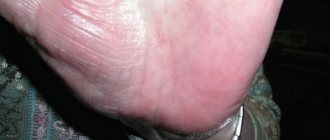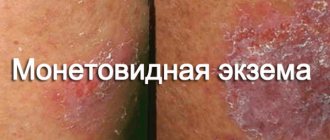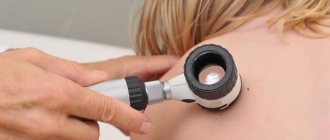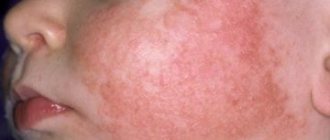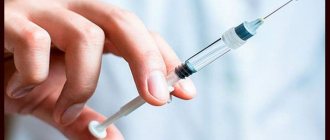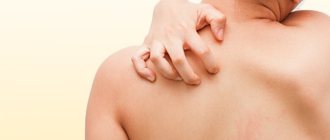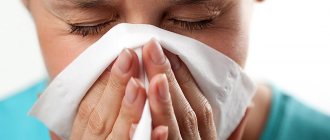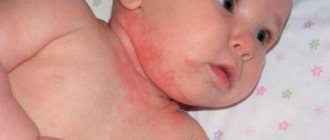What is nipple eczema
The formation of such a pathological process is influenced by a genetic predisposition to allergies. The formation of eczema on juices is often preceded by psychovegetative and neuroendocrine disorders, changes in metabolic processes and deterioration of the immune system.
Various chronic or infectious diseases can provoke an eczematous rash. Emotional stressful situations, nervous tension, and depressive states (for example, after childbirth) increase the risk of developing the disease.
Eczema begins with the formation of itching. Afterwards, the skin of the areolas will become a bright red hue, it will be covered with minor erosions and blisters, and the top layer will begin to get wet.
On this topic
- Eczema
All about the causes and treatment of eczema on the legs
- Inna Viktorovna Zhikhoreva
- September 25, 2020
When the skin of the nipples dries out, it begins to become covered with crust and scales. Over time they will fall away. Prolonged peeling will appear. There is marked dryness of the skin.
The disease is characterized by severe pain and itching. Pain may intensify during lactation. After regression of the exacerbation, a subacute course of dermatosis will occur, which is characterized by the absence of weeping. The skin of the nipples becomes thinner, becomes dry, becomes covered with small cracks, small erosions, and begins to peel off.
In the process of transforming eczema into a chronic form, the skin of the areolas becomes covered with small scales.
From time to time there is an exacerbation. When a secondary infection (often staphylococcus or streptococcus) occurs, the process spreads beyond the boundaries of the areolas, the crusts at this time will become yellow. Body temperature may rise and chills may begin.
What is eczema and what does it look like on the chest?
Eczema is a dermatological pathology accompanied by characteristic rashes, inflammation, pain, and itching. This is a non-communicable disease. However, it is difficult to treat, and therefore belongs to the category of chronic diseases with alternating periods of exacerbation and remission. Eczema on the chest occurs in both women and men, which is related to the origin.
The most common places where eczema is localized on the chest are the nipples and areolas; in some cases, dermatosis appears under the breasts.
At the beginning of eczema, rashes like small nodules with clear outlines are observed around the nipple. Over time, the nodules fill with exudative fluid and burst, revealing the lower layers of the epidermis. The wounds become overgrown with crusts, which later also fall off. Wet cracks practically do not heal. The skin of the nipples is dry, flaky, and painful or itchy.
Forms
When pathological processes are mild, pale pink spots will remain on the epidermis. Severe cases are characterized by a dark red color.
The skin is covered with rough crusts, and after final removal the dermis will remain rough and rough. Sometimes peeling, pigmentation may develop, and the color of the skin may change.
Dermatosis disrupts the integrity of the skin. Therefore, viruses, microorganisms and bacteria penetrate through it. The development of infectious diseases is possible.
On this topic
- Eczema
How to recognize and quickly treat plaque eczema
- Inna Viktorovna Zhikhoreva
- July 24, 2020
This will significantly complicate the progression of eczema on the nipples. Pathological processes can affect the central nervous system, causing disorders in its functioning. As a result, the person develops insomnia.
A severe form of the disease can become chronic. This worsens the patient’s quality of life for a long time. Getting rid of the disease is extremely difficult. New wounds form on the affected areas.
Over time, the skin may become completely affected and become very sensitive. In view of this, it is easier to prevent eczema on the nipples than to later counteract its adverse consequences.
Causes
Against the background of internal disorders in the body and existing pathological processes in the skin, the risk of developing the disease increases several times. Provoking factors that can cause symptoms of eczema on the nipples include:
- diseases of the gastrointestinal tract, liver and kidneys;
- dysfunction of the endocrine system;
- disruptions in metabolism;
- use of antibiotics and other medications;
- constant contact with harmful substances that cause allergies;
- viral diseases;
- genetic predisposition;
- helminthic infestations;
- psychosomatic factors.
Dermatosis often forms after childbirth, when the nipples are damaged during lactation. This condition can be a complication of scabies (a viral disease caused by scabies mites). In some cases, eczema appears due to allergies to mechanical, thermal or chemical environmental pathogens. For example, the disease can develop while wearing synthetic clothing.
Why does eczematous dermatitis develop? How to treat!
Eczematous dermatitis, also known as neurodermatitis or diathesis, is a common variant of atopic dermatitis associated with increased sensitivity of delayed expression. Most often, the disease affects the skin of the hands and exposed parts of the body, which are difficult to protect from interaction with irritating substances in everyday life and at work.
Causes and signs of eczematous type dermatitis
When comparing classic atopic dermatitis with eczema, it turns out that the symptoms of the 2nd case do not appear immediately, but some time after contact with an aggressive factor. The disease develops in approximately 10–14 days. If the irritating substance is of medicinal origin, the body reacts to it faster - within 7 - 8 days.
Some sensitizers cause eczema 2–3 days after interaction with them. For example, at work, a person may encounter the toxin urushiol, which is isolated from plants of the sumac family.
But in most cases, pathology develops due to the influence of the following substances and objects:
- chromium;
- cobalt;
- metal alloys;
- dental crowns and braces;
- denim studs;
- metal jewelry;
- components of household and industrial chemicals.
Internal factors contributing to the development of neurodermatitis are:
Have you been trying to get rid of PSORIASIS for many years?
Head of the Institute: “You will be amazed at how easy it is to get rid of psoriasis by taking it every day...
Read more "
- genetic predisposition;
- weakened immunity;
- improper functioning of the gastrointestinal tract and liver;
- emotional outbursts;
- impaired metabolic processes;
- chronic infections.
Dry eczema develops against the background of allergies to pollen and mold, insect bites and dust, animal hair and poplar fluff. In some patients, the triggering factor is a fungal infection.
How eczematous dermatitis manifests itself can be seen in the photo.
OUR READERS RECOMMEND!
Our readers successfully use PsoriControl to get rid of psoriasis. Seeing how popular this product is, we decided to bring it to your attention. Read more here...
Dry skin flakes and cracks. Thickened areas of rashes and redness are observed on the integument. The changed areas cause pain, itch, and crust over. Failure to see a doctor in a timely manner threatens to transform the zones into bright papules, prone to merging into wide plaques. The fabrics resemble cracked porcelain or a dried-up stream. As the disease progresses, the areas become weeping and develop into erythema.
Nutrition for dry eczema
In acute cases of the disease, treatment begins with switching to a diet. Proper nutrition for eczema involves avoiding salty, spicy and smoked foods. Eating garlic, onions and eggs is also prohibited. The menu is recommended to consist of vegetable soups and cereals. Fish and chicken are allowed to be baked and boiled. It is useful to wash down your meals with beetroot and carrot juices.
Symptoms
The symptoms of such dermatosis in the nipple area are in many respects similar to the manifestations of the disease on other parts of the skin. The disease quickly turns into a chronic form. The course is wavy, where remissions can be replaced by acute phases.
Poor susceptibility to treatment is characteristic, which may explain the high risk of unpleasant consequences. Despite the fact that such pathogenesis is not contagious, the appearance often causes hostility.
Symptoms of this disease:
- pronounced inflammatory processes near the areolas;
- outlined contours of the affected areas, the presence of externally noticeable boundaries;
- a red-pink papular rash that contains translucent fluid;
- dry skin;
- itching, pain and burning sensation;
- weeping nipples.
On this topic
- Eczema
Causes and treatment of eczema in the eyes
- Olga Aleksandrovna Kalinina
- July 13, 2020
Eczema on the nipples often appears in women during lactation. During breastfeeding, the baby is able to injure the nipple, which provokes the development of the disease.
The papular rash, which appears at the preliminary stage, transforms into blisters and small weeping erosions within a few days. Then the affected areas become covered with scales and brown crusts.
In pregnant women, such dermatosis is also often observed. The weakened body of the expectant mother is prone to infection. When chronic skin diseases are present, the likelihood of eczema appearing on the chest will increase several times.
The disease must be treated carefully, since it is very important to prevent active medications from entering the mother’s body.
be careful
People suffering from psoriasis often make one big mistake:
The patient is trying to eliminate the external signs of the disease, but eliminating the external manifestations of psoriasis does not solve the problem from the inside.
Roughly speaking, even if it is possible to remove the signs of psoriasis from the outside and put the skin in order, inside the body the disease continues to devour the autoimmune system, which provokes severe diseases, many of which are fatal. Particularly scary is the fact that psoriasis can provoke cancerous tumors.
Diagnostics
Diagnostic measures are carried out based on the specifics of the disease. Eczema is the most popular dermatosis. But there are a lot of reasons for its development, and not all of them have an explanation.
The presence of a pathological process can be detected by clinical symptoms. An external examination of the patient and clarification of the medical history is enough for the doctor. The examination can be carried out in a laboratory setting. This process is lengthy and may not yield results.
First, tissue and scrapings are diagnosed under magnification. Such an analysis will make it possible to detect any changes in tissues, processes characteristic of eczema on the nipples.
A general immunogram helps to fully assess the state of immunity. Thanks to her, it is possible to select the appropriate therapy. In addition to this diagnosis, auxiliary diagnostics are prescribed.
Instrumental diagnostics
This type of examination is multifaceted and consists of several procedures. First, the patient must submit a culture, which is taken from the damaged areas. Thanks to such diagnostics, it is possible to check susceptibility to antibacterial agents, as well as to inflammatory agents.
On this topic
- Eczema
All about tylotic eczema
- Olga Aleksandrovna Kalinina
- July 11, 2020
This makes it possible to choose the appropriate therapy. Coprogram involves the study of feces. Such diagnostics provide a complete picture of the patient’s well-being and hidden difficulties in the body.
Ultrasound of the abdominal cavity helps detect changes in organs, which can trigger the formation of dermatosis. Allergic skin reactions are carried out in order to identify the allergen.
Differential diagnosis
First, a scraping is performed. This will make it possible to study damaged tissues and determine the nature of inflammatory processes.
A general blood test shows the severity of inflammation. A biochemical blood test makes it possible to detect disorders that are associated with metabolism.
It is necessary to determine the content of immunoglobulins; their significant increase indicates the nature of the disease. If worm eggs are found in the feces, then this will be the main provoking factor of eczema.
Correct diagnosis facilitates the selection of appropriate therapy.
Treatment
Therapy for nipple eczema is a long process that requires strict adherence to the doctor’s instructions. In certain situations, experts recommend not to rush into using drug treatment, giving the body a chance to heal from dermatosis on its own. When no positive changes are observed over a long period of time, the doctor prescribes optimal therapy.
It is important to reconsider your lifestyle and adjust your diet. It is necessary to exclude harmful products from the menu.
You need to choose your underwear carefully. If you get sick, bras need to be changed frequently. It is optimal to use clothes made of natural material to avoid irritation.
On this topic
- Eczema
Best Treatments for Dry Hand Eczema
- Olga Aleksandrovna Kalinina
- July 11, 2020
Drug therapy is mandatory and should be used along with other methods. It is possible to use medications only after consulting a doctor. In any situation, the elimination of the pathological process must be comprehensive. Applicable:
- Enterosgel. The drug is intended for internal use. Take 1 tbsp. l. three times a day. The duration of treatment reaches 1-2 weeks, depending on how you feel. Side effect: constipation is possible at the beginning of therapy.
- Atoxyl. 1-2 packets are dissolved in 150 ml of liquid. The drug is taken one hour before meals. The duration of treatment and frequency of use are prescribed by a specialist. Side effect: constipation.
- Prednisolone. The dosage is selected individually. Approximately 5 tablets per day. Side effects: obesity, acne, psycho-emotional disorders.
- Dexamethasone. The dosage is prescribed by a specialist. Approximate dosage is up to 15 mg per day. There are no side effects.
- Pipolfen. Adults and adolescents take 75-100 mg three times a day. The maximum dosage should not exceed 500 mg. Contraindications will be: childhood, susceptibility. Side effects: lethargy, anxiety, dysfunction of the cardiovascular system.
- Loratin. Use internally. 1 tablet or measuring cup per day. The duration of treatment is determined individually. Contraindications: sensitivity, pregnancy and breastfeeding. Side effects: fatigue, dermatitis, obesity.
- Timalin. The drug is administered intramuscularly as an injection. Adults are prescribed 5-20 mg. For children, the dosage is adjusted. The duration of therapy is prescribed on an individual basis. There are no side effects.
- Immunofan. The medication is administered as an intramuscular injection. The dosage is prescribed individually, depending on the patient’s well-being. The duration of treatment is adjusted. There are no side effects.
It is forbidden to start therapy yourself. There is a high probability of deterioration of health and intensification of existing symptoms.
Complications
Adverse consequences occur against the background of eczema, along with herpesvirus. As a result, herpetic fever or smallpox occurs. Therefore, you need to avoid contact with the pathogen and, to the best of your ability, limit communication with infected people who have severe symptoms.
If the disease has developed in a loved one, it is necessary to cover the damaged area so that the virus does not enter the eczema.
Herpes can cause a papular rash that looks like blisters on the dermatosis. Under such influence, eczema on the nipples can worsen.
On this topic
- Eczema
What are the risks of idiopathic eczema?
- Olga Aleksandrovna Kalinina
- July 1, 2020
The patient feels worse and develops a fever. Often the problem affects internal organs, which complicates the patient’s condition. In such a situation, it is necessary to seek help from doctors.
The patient must use Acyclovir-based medications. These include Acyclovir and Zovirax ointments. This will make it possible to stop the spread of infection and prevent adverse consequences.
Forecast
The prognosis for nipple eczema depends on many factors. First of all, it is necessary to take into account the specifics of the patient’s body condition. This applies to its nervous system and immune functions of the body. The duration of the disease, the frequency of relapses, and the patient’s working conditions are important.
Exacerbation of the pathological process has a more favorable prognosis. It is difficult to cure idiopathic and priuriginous forms of pathological processes. And yet the likelihood of healing is high.
The prognosis will worsen significantly when the pathogenesis develops in children and the elderly. This appears against the background of failures of protective functions in the body. Mostly, the prognosis completely depends on how soon the patient went to the doctors.
His well-being and prescribed therapy are of no small importance. It is impossible to eliminate the chronic form of eczema on the nipples; exacerbations will occur frequently. The pathogenesis continues for years, and the prognosis will be unfavorable.
Colors of crusts on nipples
There are many diseases that form a symptom. They come in different colors. It depends on the cause of the pathological process.
- Yellow. This is a sign of the formation of suppuration. Pathogenic microorganisms penetrate into the mammary glands through neighboring tissues or the environment, causing a bacterial infection. Yellow crusts appear on the nipples, which separate from the skin with pain. When pressing on the mammary gland, pus is released. The cause of this condition may be mastitis (inflammation of the mammary gland) or furunculosis (a purulent rash on the surface of the skin).
- White. If a woman is pregnant or breastfeeding, this is a normal physiological phenomenon. A white crust indicates the development of lactation. If a woman is not pregnant or does not breastfeed, a pathological process develops in her body. For example, a benign or malignant tumor, leading to the proliferation of glandular tissue.
- Brown. The appearance of brown formations, which are formed due to areas of necrosis of breast tissue. This could be oncology going into stage 3. The tumor grows strongly, squeezing surrounding tissues. The breasts may become very wrinkled and sag.
To make sure there are no pathologies, it is recommended to immediately contact a therapist, mammologist, endocrinologist, or gynecologist.
It is unacceptable to consult by sending photos or using the phone. Only after receiving research data will the doctor tell you why the formations appeared and what to do next.
Prevention
There are several main preventive measures regarding pathological processes of the skin. First of all, you should avoid working in hazardous industries. This mainly applies to those who have a hereditary predisposition to eczema. It is necessary to limit contact with allergenic substances and irritants.
You need to follow the rules of hygiene. A balanced diet and an active lifestyle will make it possible to strengthen the body. Stressful situations and nervous tension should be excluded. It is optimal to choose clothes and underwear made from natural materials. Tight shoes, gloves and should also be excluded.
It is necessary to timely treat diseases, in particular those that can provoke the formation of eczema on the nipples. It is necessary to stop drinking alcoholic beverages and smoking tobacco. A woman should lead a healthy lifestyle after childbirth. Following preventive measures will make it possible to avoid such an unpleasant disease.
Diet
For people who want to quickly get rid of eczema or prevent its worsening, doctors recommend including a sufficient amount of milk and dairy products, fruits, herbs and vegetables in their diet. Pork and beef must be replaced with more dietary varieties of meat - rabbit, turkey and chicken.
During the treatment process, it is important to completely avoid fried, spicy, smoked, salted and pickled foods. Carbonated drinks, alcohol, coffee, confectionery, flour, semi-finished products, and fast food are also prohibited. With the onset of remission, these dishes can be reintroduced into the daily diet, but in limited quantities, so as not to provoke a relapse of the disease.
